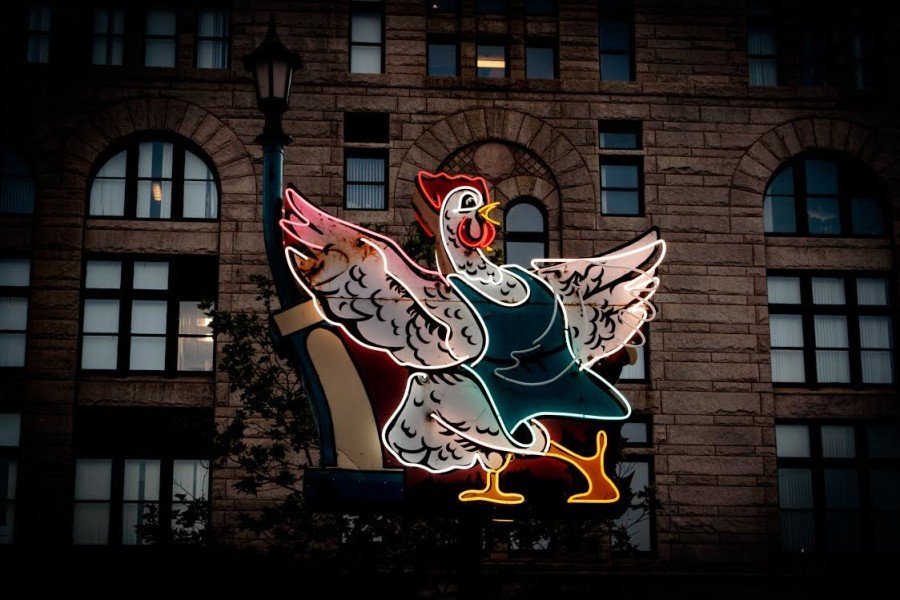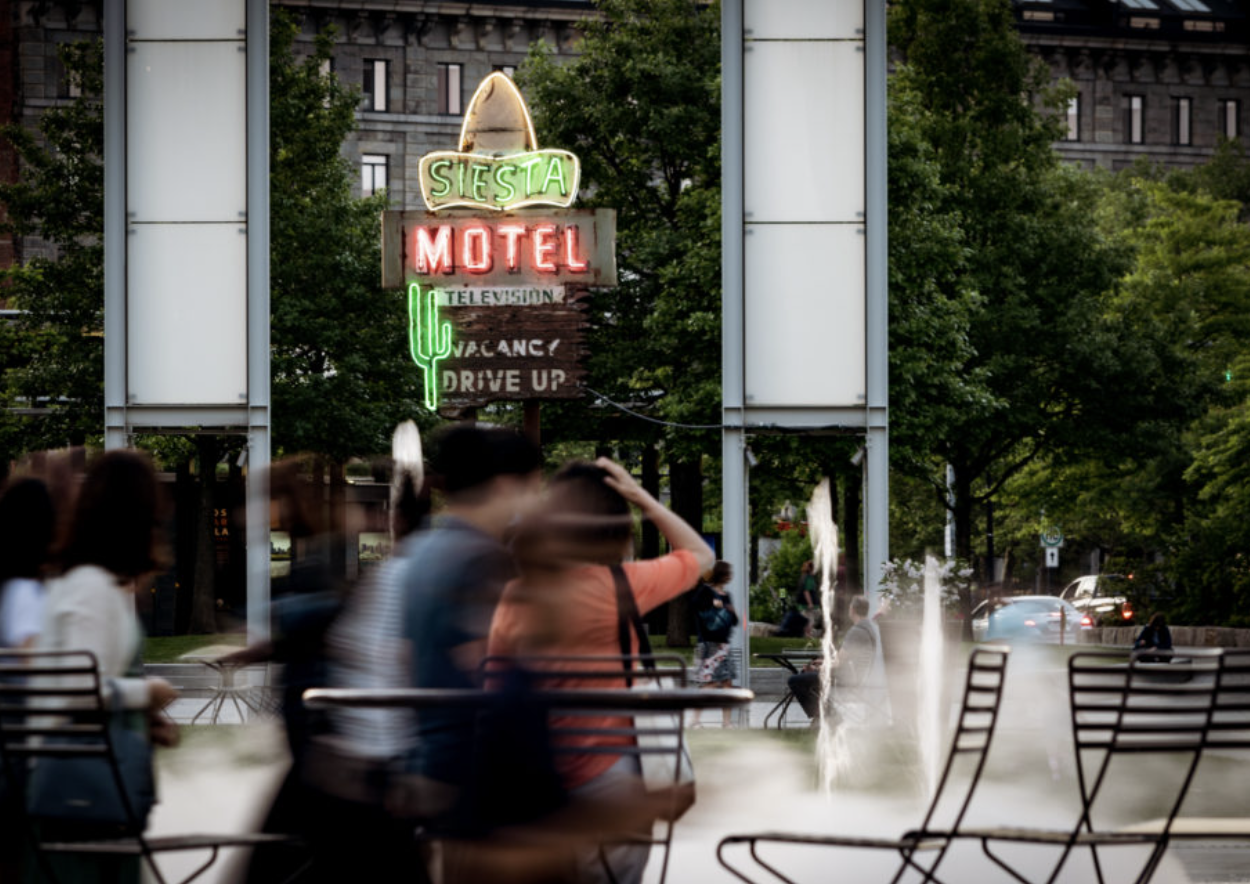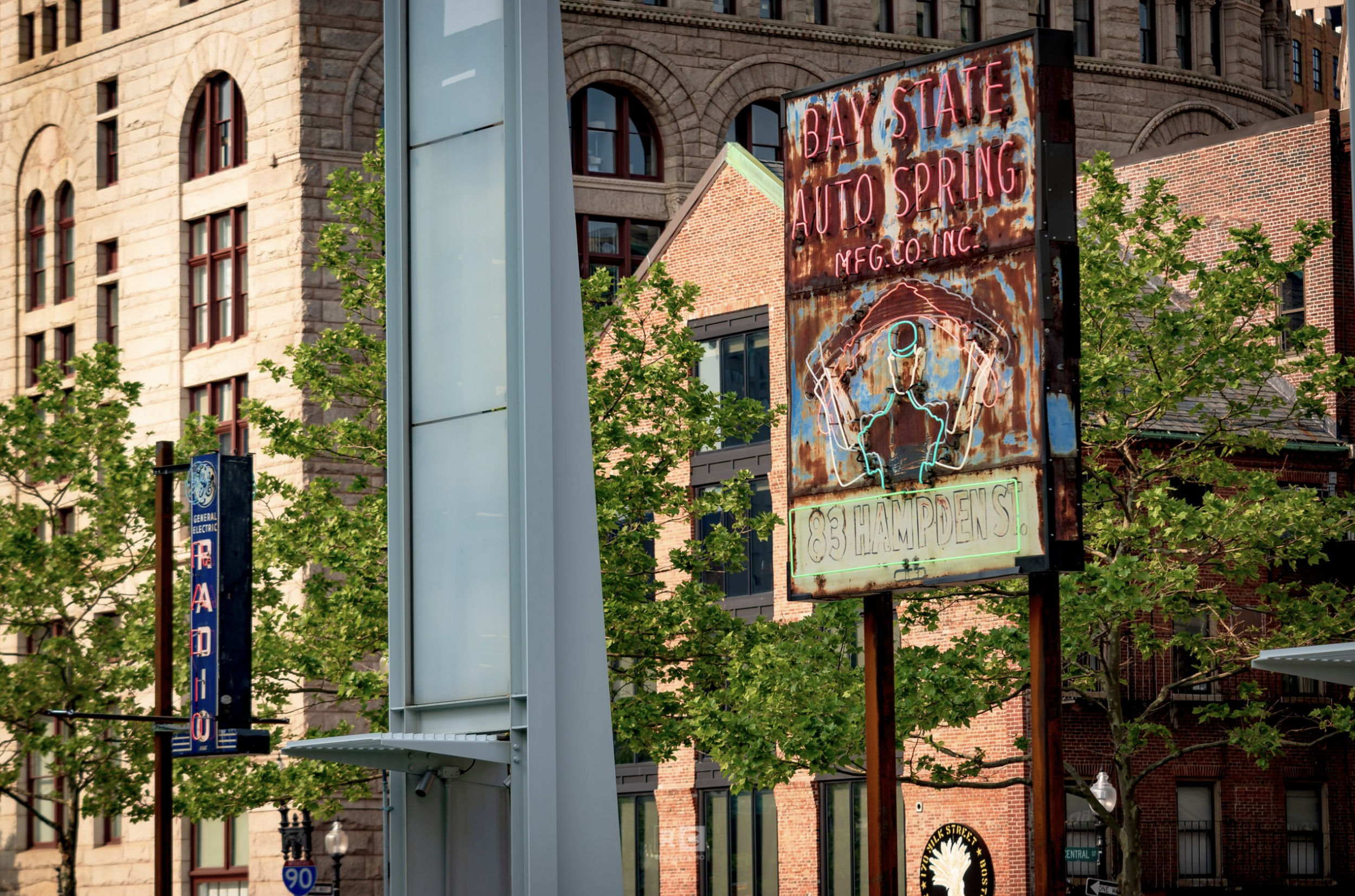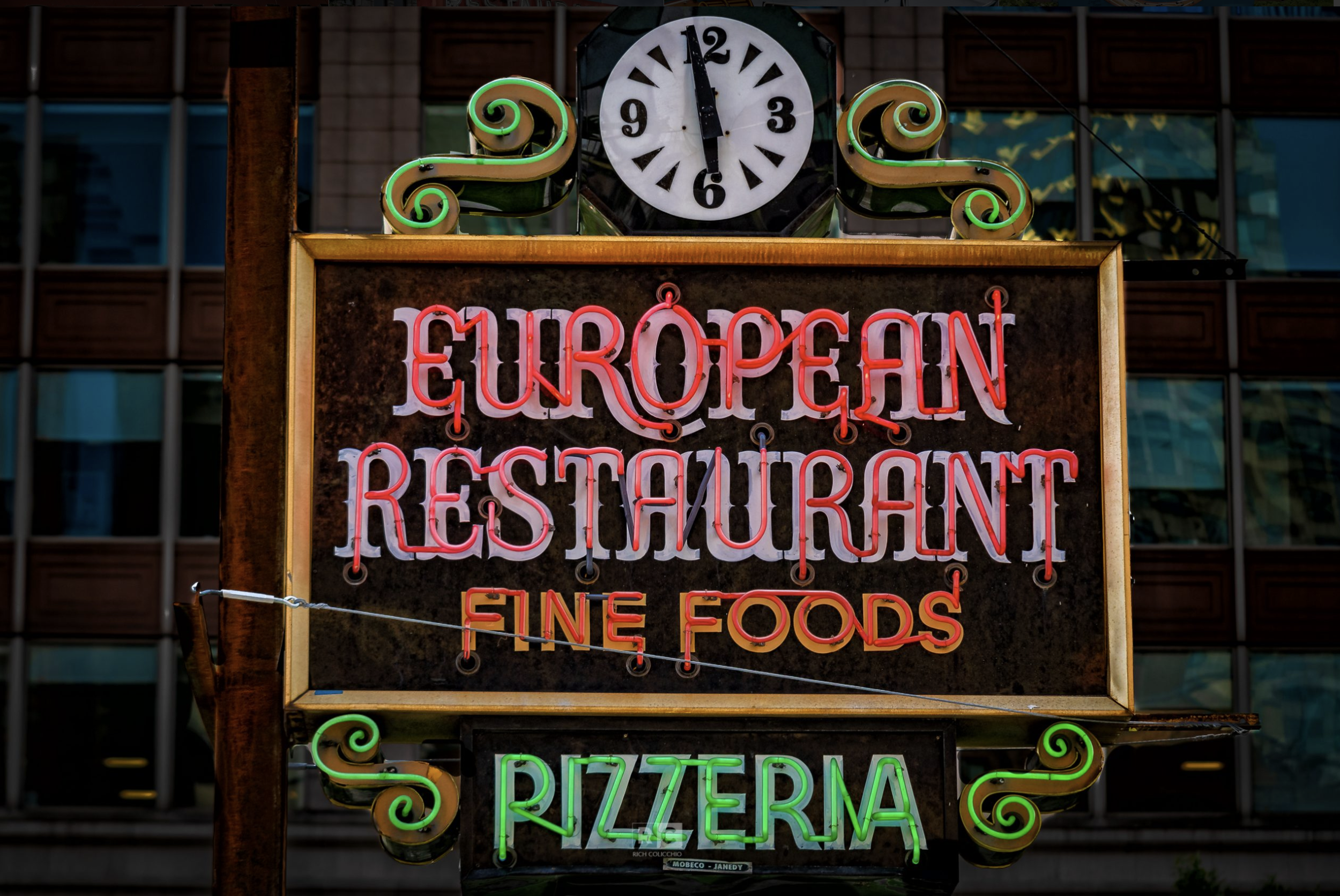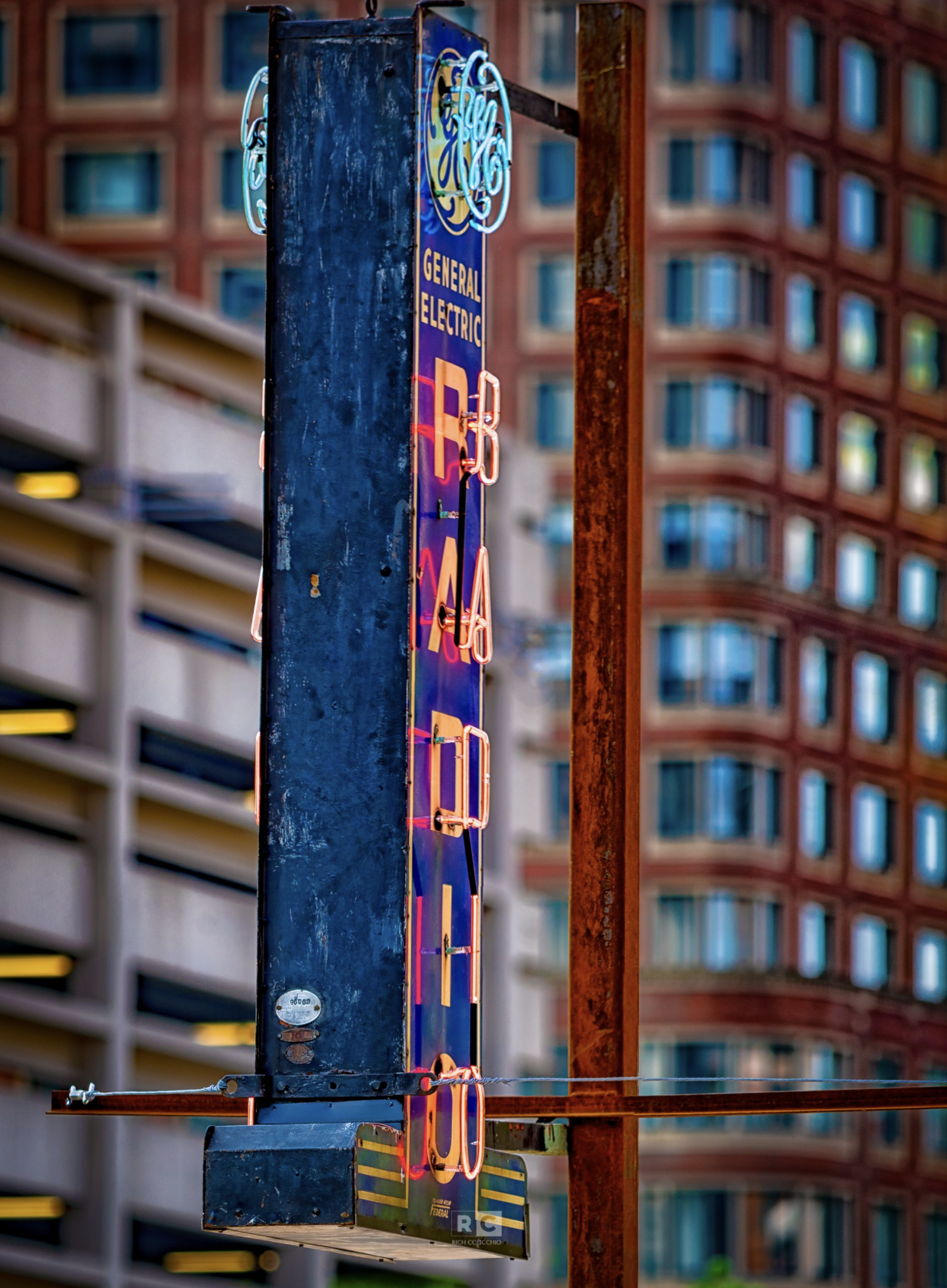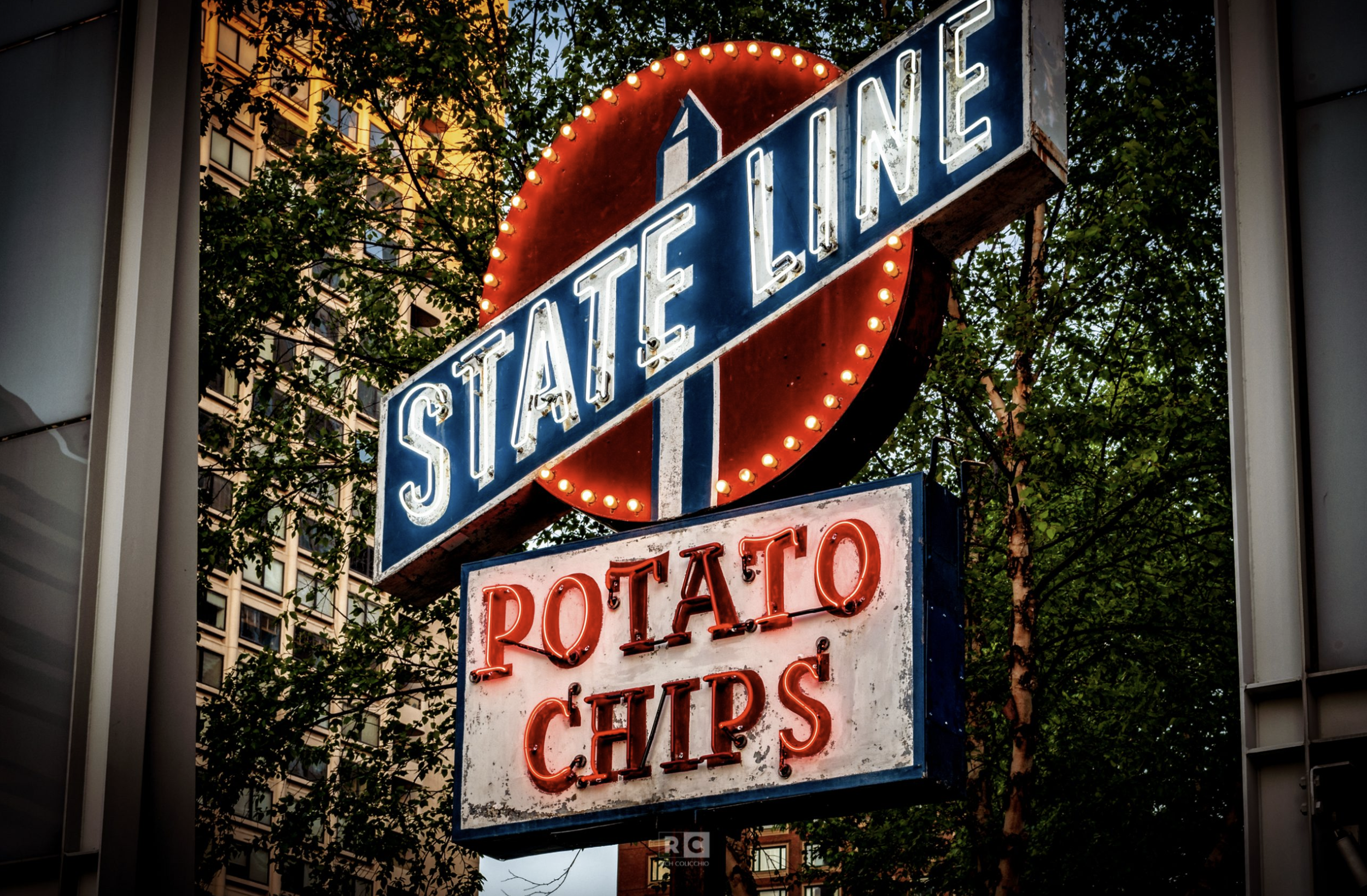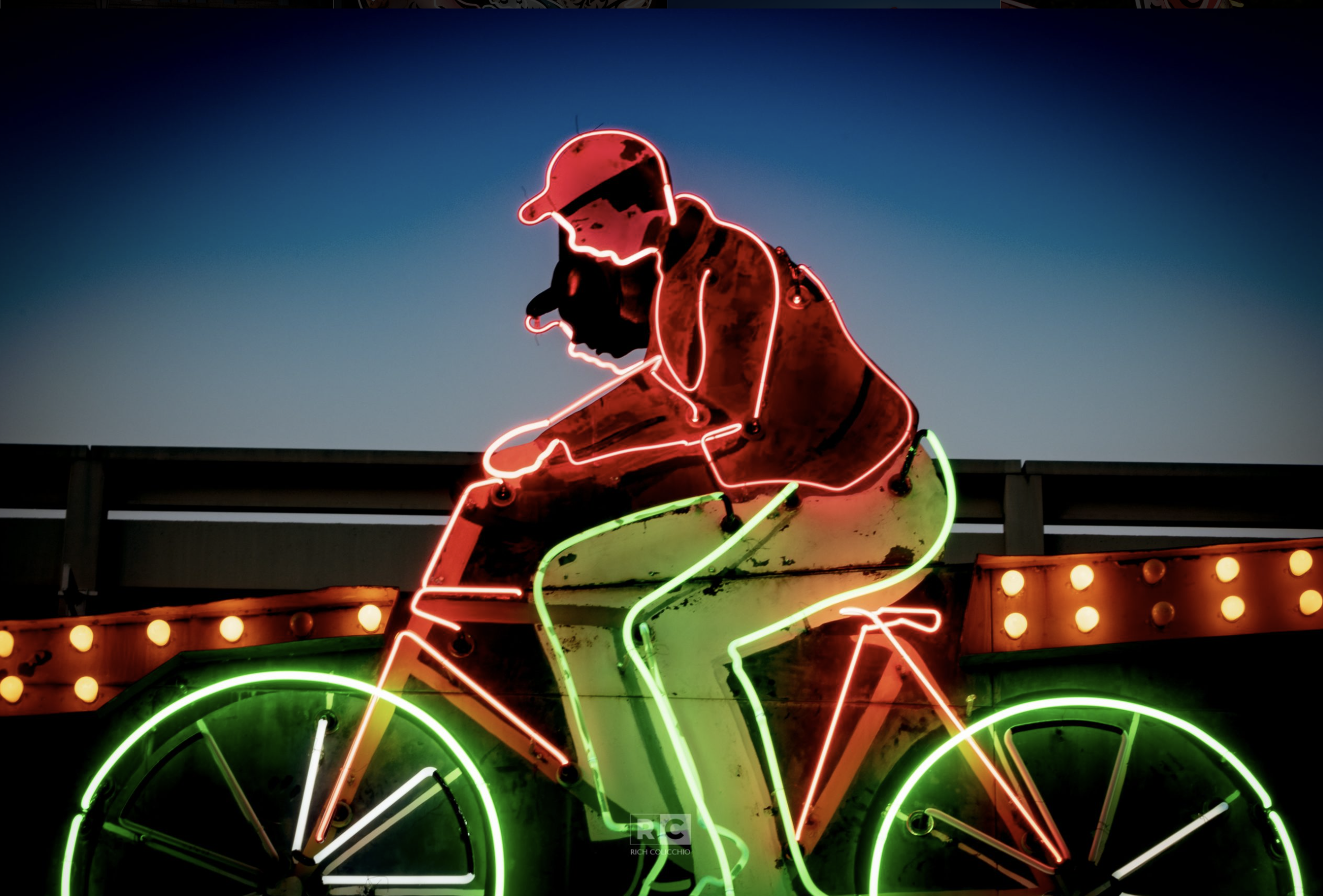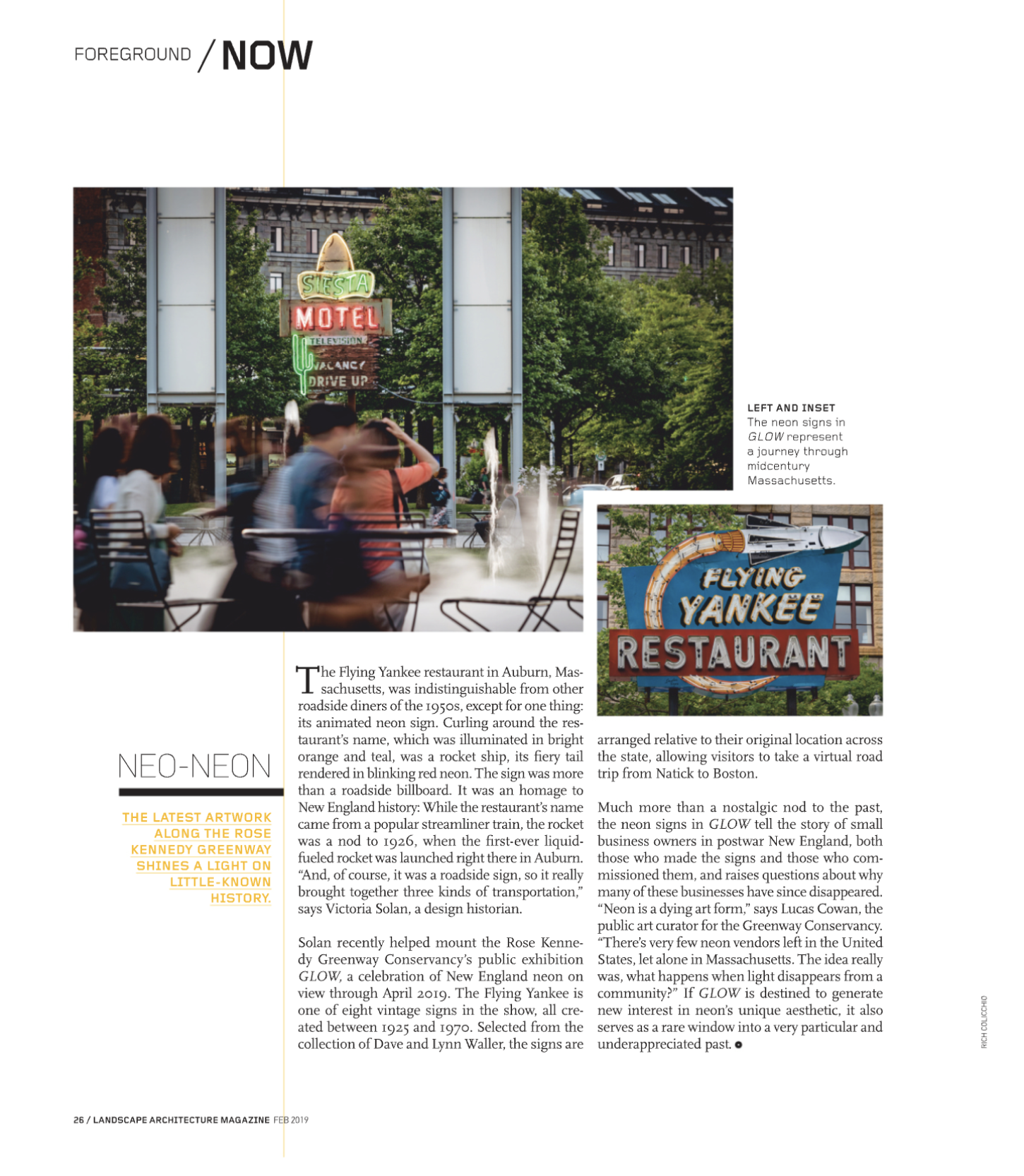GLOW, Neon Signs in Massachusetts, Collection of Dave & Lynn Waller
Photo: Anthony Crisafulli
Waller’s vintage neon signs, from local businesses c.1925-1970, serve as an illuminated monument to the neighborhoods, businesses, and everyday lives of our recent past.
All of the signs you see in GLOW became landmarks in their neighborhoods and towns. Most were illuminated for decades, some for the full length of time that the company was in business. In a postwar landscape increasingly dominated by the automobile, highways and homogenous corporate architecture, handmade neon signs like the most of the signs on display here became distinctive landmarks. These glittering, creative neon signs were in some ways more memorable than ways than the ordinary buildings next to which they flashed, flapped and blinked. Neon signage may not have been an art form, but it was – and still is – a form of creative expression. In Massachusetts and elsewhere, neon sign-making requires an unusual fusion of craftsmanship, scientific expertise, and graphic design talent. Each of the signs in GLOW is evidence this unique blend of skills on the part of its fabricator. Viewed together, the signs are part of Massachusetts’ graphic and creative history as well as a legacy of the Bay State’s history of entrepreneurship.
In placing these signs together on a park in central Boston, the Greenway Conservancy invited you to consider new ways of interpreting these signs; and contemporary ways of thinking about how neon light can work as a catalyst for engaging with and in public space. Some visitors may remember one or more of these signs as favorite food destination, place of employment, or simply a bright, flashing landmark on a well-travelled route. If you are new to Massachusetts, or just visiting Boston, these signs are evidence of the small businesses which flourished here. By bringing together signs from different locations in Massachusetts, this exhibition offered a brief tour of a much larger state. By placing these signs in close proximity with each other, the Greenway created a new geography of light, inviting you to consider how the presence or absence of light can define a space, how particular kinds of light can encourage us to come together, how light can create open, inclusive spaces for dialogue about technology, creativity, and the shared heritage of our built environment.
– Victoria Solan, Architectural Historian and Consultant Historian, GLOW Exhibition.
